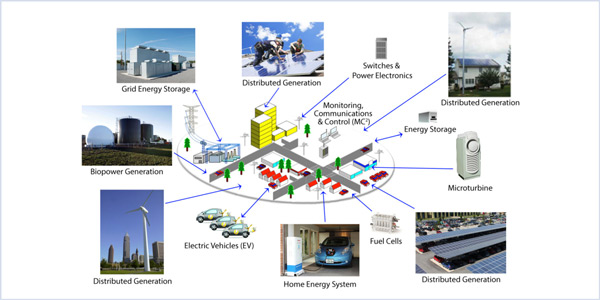By Terry Brinker
Recently, I attended a solar power event hosted by Solar Energy Industry Associates (SEIA) and Smart Electric Power Alliance (SEPA). The event was well attended by industry thought leaders, manufacturers, solar companies and even legislators. Of course, being a solar event, most of the speakers lauded the benefits of solar: how it’s better for the environment, how the price of solar continues to decrease, how photovoltaic panels continue to improve and how the industry has made it easier to integrate solar into more communities. If you were not from this planet, you would question why everyone does not have solar. It sounds like the best thing since sliced bread.
In the words of Lee Corso, the colorful ESPN football analyst, “Not so fast, my friend.”
Others might have a completely different take on solar and distributed energy resources altogether. Ironically, this event was held in Atlanta, which is also where NERC is headquartered. NERC has raised some concerns about DER. In fact, I wrote an article about it. NERC is not alone in its concerns. According to a study issued by Accenture, many utility executives see DER as the biggest stress on grid reliability. Nearly 60% of the executives surveyed expressed concerns.
Adding to the complexity of this debate is the efforts by many states and cities to “go green.” California just passed legislation requiring the state to be 100% renewable by 2045. Other states are certain to follow California’s lead. Many, like North Carolina, already have ambitious renewable goals. Recently the Atlanta City Council approved a measure aimed at making Atlanta 100% renewable by 2035. So, who is right?
Recent studies have suggested that DERs are not a threat to the grid and may even help the grid to be more reliable. CAISO — in collaboration with the National Renewable Energy Laboratory, First Solar and Southern Co. — used a 300-MW solar facility to conduct a study that determined that “solar photovoltaic resources can provide ancillary services in a way comparable to or even better than conventional generation resources.” General Electric has stated, “The days of relying on synchronous generation for everything are over.” And who could argue against the technological advances that have been made in the industry such as plant-level controllers and virtual oscillator controls, which are designed to respond to changes in load, frequency and voltage similar to conventional generation? I highly suggest reading the article “Can Smarter Solar Inverters Save the Grid?” found here.
The DER industry will point to these studies, articles and advancements and say, “Move on, there is nothing to see here.” However, (insert Lee Corso quote here), there is ample evidence to show that we are not quite there yet.
On Aug. 16, 2016, there was a significant event resulting in the loss of nearly 1,200 MW of PV generation. In short, a fire caused a fault that resulted in three facilities ceasing output instead of riding through the fault. DER detractors will point to events like this to show that instead of providing support to the grid, DER actually hurt the grid when needed at the most critical time. NERC and the Western Electricity Coordinating Council conducted a study of the event and published a report. (See CAISO Boosts Reserves After August Event Report.) The 2016 Australia blackout has been attributed to its reliance on wind power. Another concern of NERC is that with so many DER projects in the works, it cannot adequately account for and plan for these additional megawatts. Planning is essential to grid reliability. So where do we go from here?
Although I claim to be a subject matter expert (I have stayed at a Holiday Inn Express before), I do not claim to have all of the answers. However, with legislators mandating renewable energy usage and renewable energy becoming cheaper with each passing year, we have to adequately plan for this new normal. To that end, it is critical that the various stakeholders — DER industry, regulators, legislators and utilities — work together to effectively and strategically integrate renewables into the grid while also providing the reliability that is necessary. We cannot afford legislative mandates like the one in Hawaii that had to be rewritten because of unintended consequences. We also cannot afford the installation of solar farms that cannot respond appropriately to disturbances on the grid, like the August 2016 Southern California event. We cannot afford burdensome regulation that overreaches. We can afford to have thought leaders at companies such as First Solar, Southern and Duke Energy; government agencies like FERC, NERC, NREL and the Energy Department; industry associations like SEIA, SEPA and the Institute of Electrical and Electronics Engineers; and state legislators work together and create strategic policies that ensure that we all succeed in this new normal.
Is DER a threat to the grid? Not if we all work together to ensure that it is not.
Terry Brinker, who has 23 years of experience leading, facilitating and implementing improvements in power plant operations, control room operations, compliance and regulatory matters, is the president of Reliable Energy Advisors. Terry previously served in leadership roles during a five-year stint at NERC, where he served as senior manager of standards information and personnel certification, manager of registration services, and senior event investigator.





